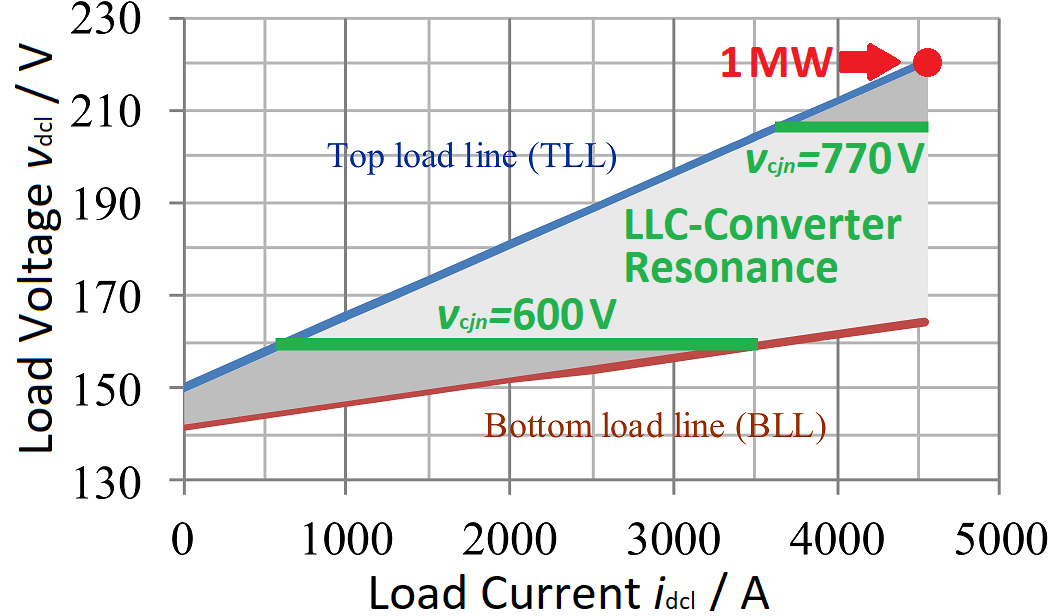Modular High-Current Rectifier with Variable Output-Voltage

Project acronym: DFG-MMC-LLC
Project period: 3 years (2016/04 – 2020/09).
Project partner: German Research Foundation (DFG) https://gepris.dfg.de/gepris/projekt/314461654

Motivation
Growing renewable energies lead to an imbalance between power generation and consumption. One long term promising energy storage for surplus renewable energies is Hydrogen. Therefore, a converter has to be developed to converter the typical medium AC-voltage of 10 kV to a low DC-voltage of approximately 140 V-220 V as shown in Fig. 1, which is the load characteristic of a typical electrolyzer. In the field of hydrogen electrolysis, the state of the art rectifiers show low power factors, high harmonic distortions and low modularity. For these reasons, a modular rectifier is investigated, which consists of many identical LLC converters [1]. The topology is shown in Fig. 2.

Project goals
The goals of the project are to design the MMC for a high efficiency over a large operating area because hydrogen production is more efficient at partial load, but at full load the hydrogen production rate is higher.
Furthermore, the control of the MMC has to be developed and implemented to achieve a controllable power factor and a low THD. Thus, the LLC has to be designed for a high efficiency and verified with a laboratory prototype [2]. In addition, different MMC topologies have to be analysed, and the most efficient topology selected [3][4].

Realization
The overall power of the converter is 1 MW and the optimal number of modules is 45 to decrease the module voltage at light load, which allows operating the LLCs at resonance for a wide range out loads. The LLC prototype shows a peak efficiency of 98.2 % at half load and resonance [2].
In order to achieve stable operation of the MMC, the module voltages have to be balanced. A new and robust algorithm is developed, which increases the output power of the LLC with a higher module voltage, while decreasing the power of LLC with low module voltage. The results are shown in Fig. 3 for a load transition from 100 % to 50 %.
References
| [1] | R. Unruh, F. Schafmeister, N. Fröhleke, J. Böcker |
| [2] | R. Unruh, F. Schafmeister, J. Böcker 11kW, 70kHz LLC Converter Design with Adaptive Input Voltage for 98% Efficiency in an MMC IEEE 21st Workshop on Control and Modeling for Power Electronics (COMPEL), 2020 |
| [3] | R. Unruh, F. Schafmeister, J. Böcker Evaluation of MMCs for High-Power Low-Voltage DC-Applications in Combination with the Module LLC-Design 22nd European Conference on Power Electronics and Applications (EPE'20 ECCE Europe), 2020 |
| [4] | R. Unruh, F. Schafmeister, N. Fröhleke, J. Böcker 1-MW Full-Bridge MMC for High-Current Low-Voltage (100V-400V) DC-Applications PCIM Europe digital days 2020, Germany, 2020 |

